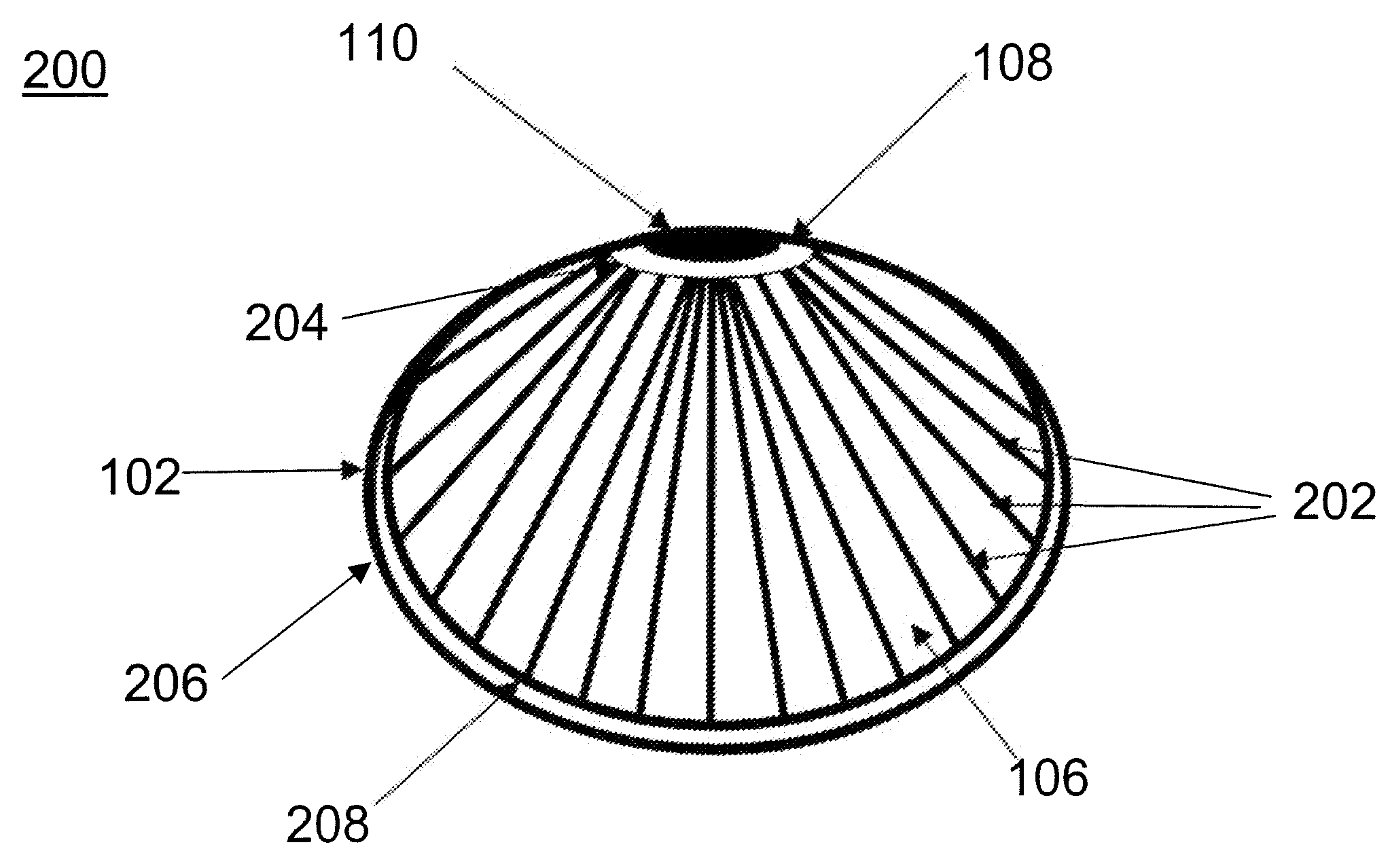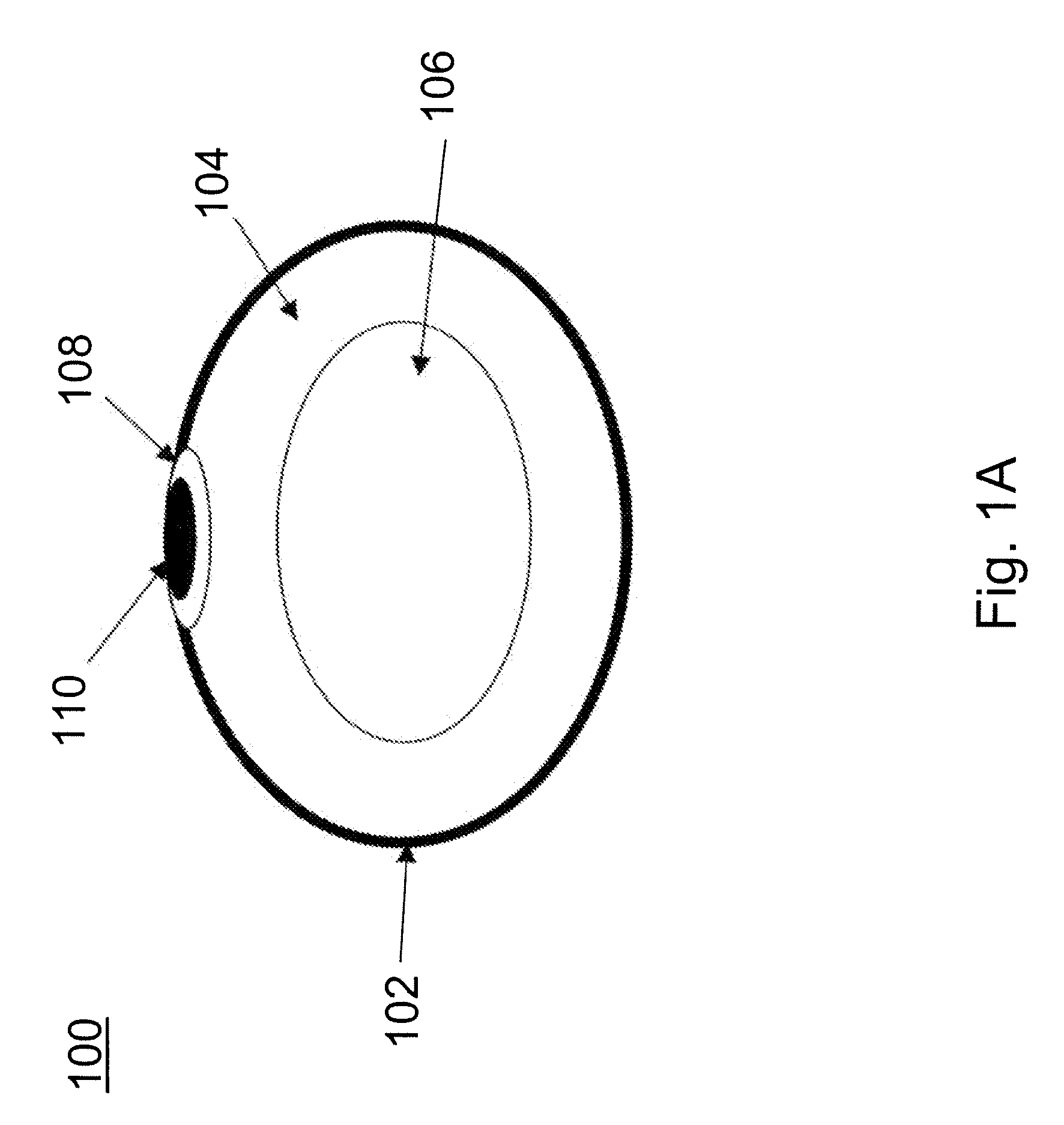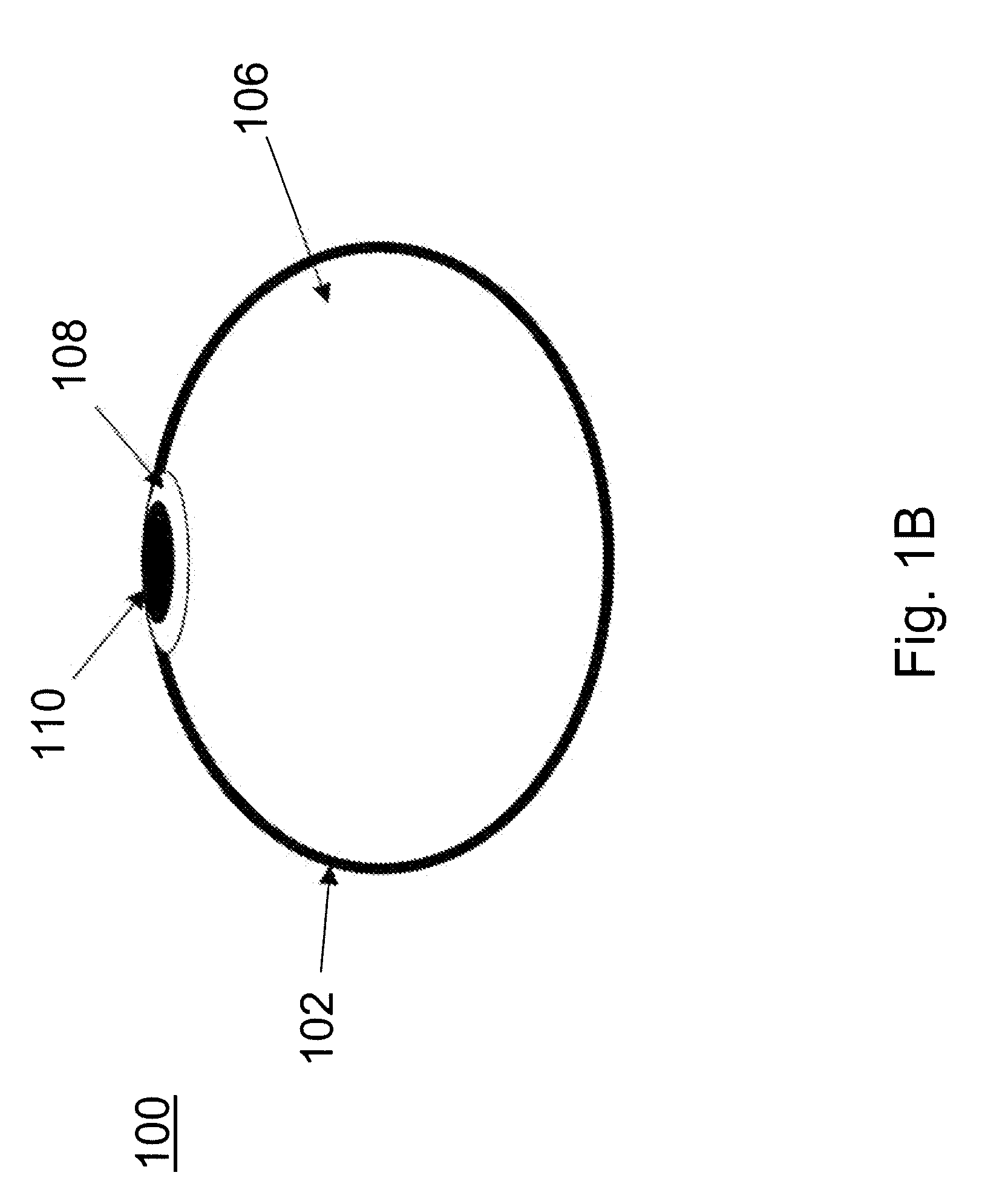[0008]Provided are devices for minimally invasive delivery of implants and monitoring for the integrity of implants, such as breast implants, that function to alert the user or a healthcare provider that the integrity of the implant is failing. Methods of using these devices also are provided. The devices are useful for reducing surgical incisions, reducing
recovery time and measuring leakage into or out of the implant as well as other parameters such as changes in electrical properties within the device.
[0009]One embodiment of the device includes hydrogel which will greatly decrease exposure to foreign materials (many hydrogels are over 90% water or
saline) in the event of a rupture. The hydrogels of the present invention require a minimum of 80% water / saline in their hydrated state in order to allow for sufficient compression to provide a minimally invasive state. The hydrogel may be manufactured and compressed from its final,
solid, hydrated three-dimensional form (similar to a compressed
cellulose sponge) and / or may be a semisolid viscous gel similar in texture to
silicone oil, then desiccated or dehydrated in order to provide for compression prior to delivery. The
solid, cohesive hydrogel which consists of hydrophilic groups covalently bonded to each other, may be free-floating or preferably, bonded to the shell of the implant. Alternatively, the shell of the device may be formed by dipping the preformed expanded hydrogel into a silicone liquid or
casting the shell around the preformed hydrogel. The hydrogel used in the present invention may include, but should not be limited to:
Chitin,
Mannuronic Acid,
Guluronic Acid,
Glucomannan,
Hyaluronic acid,
Chitosan, PEG, HPMC, Pluronic, PVA and / or
glycerol derived polymers. Alternatively, the hydrogel may also consist of
acrylate,
polyethylene oxide,
cellulose, collagen,
acetic acid, or other
polysaccharide derived
polymer. Alternatively, the
polymer may be any hydrophilic,
biocompatible material capable of being compressed and expanded upon rehydration. In further alternative embodiments, the hydrogel may consist of
coating on the inside of implant shell and / or a
coating on a silicone support structure within the shell which provides a hydrophilic interface to the silicone supports or silicone shell.
[0010]Use of the hydrogel of the present invention allows for the possibility of inflation or expansion in situ due to the possibility of
desiccation pre-implantation and hydration post-implantation. This is a key feature and an important aspect of the present invention in that the rehydration in situ allows for the implant to be packaged within an
insertion pod and placed minimally invasively through a
small incision in the umbilicus or lower breast much as is done with saline-filled implants today. Unlike saline-filled implants today, though, the hydrogel implants of the current invention have a far superior feel, comparable to that of silicone-gel filled implants. Thus, through
desiccation, compression, delivery, and rehydration of a hydrogel within a
breast implant shell, the present invention provides the benefits of silicone-gel filled
breast implant with the lower risks associated with a saline-filled implant. In its preferred embodiment, the hydrogel is created in its final shape covered by or inserted into a silicone shell and then desiccated and / or compressed after the patch, with rupture sensing capabilities as described below, affixed to the patch of the implant. This
polymerization of the hydrogel followed by
desiccation and cross-linking allows for a defined shape to the breast implant, a feature that is currently considered a main
advantage of silicone implants over saline implants. Once the device is inserted into the body in its compressed state, it is then rehydrated using a water-based solution designed to create an isoosmolar environment within the implant. After rehydration, the filling line is removed from the implant and it assumes its final configuration.
 Login to View More
Login to View More 


